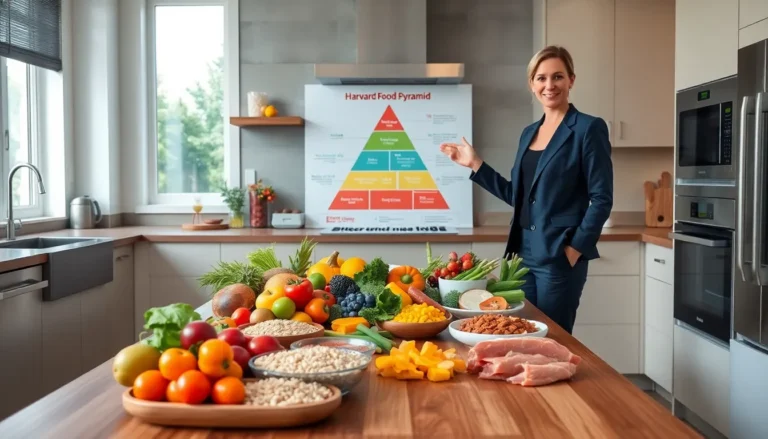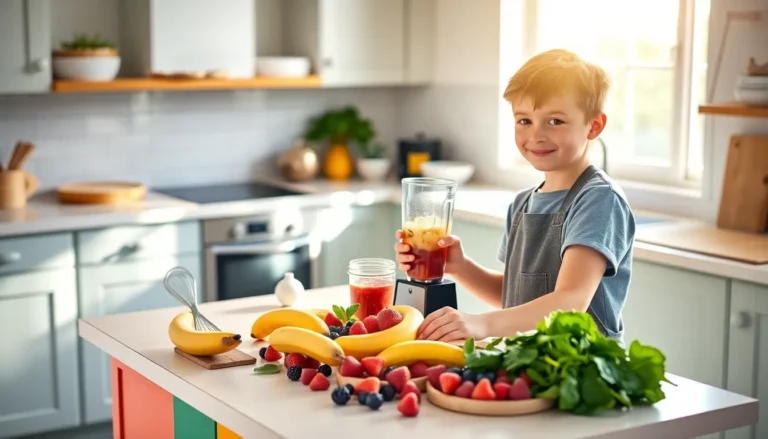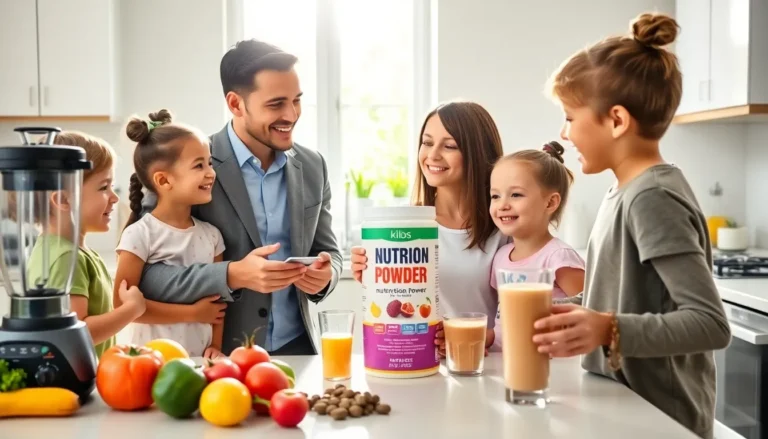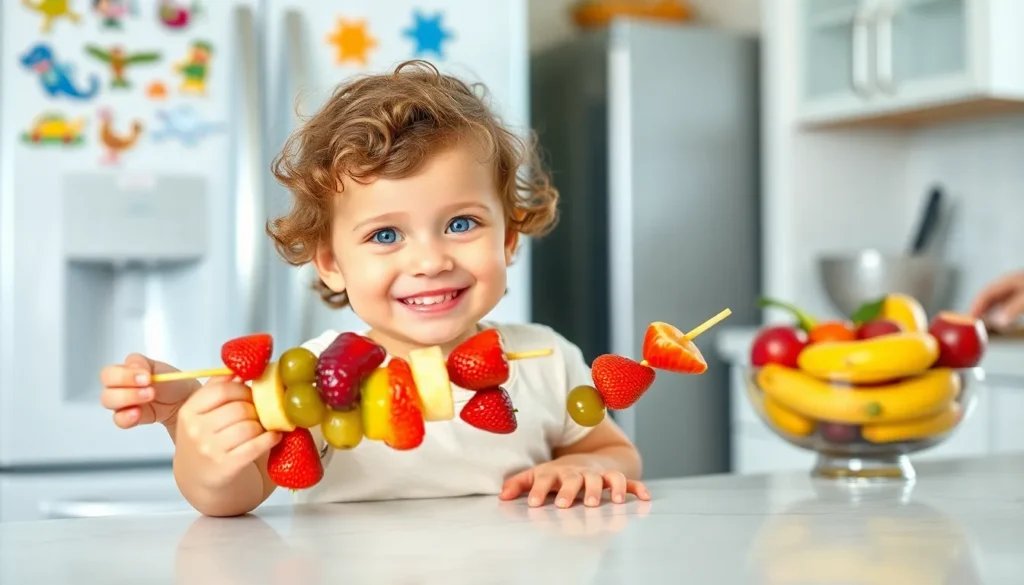Table of Contents
ToggleFinding meals that satisfy a toddler’s taste buds while being nutritious can feel like a daunting task. Parents often struggle to balance creativity and healthiness in their little ones’ diets. Fortunately, toddler-friendly recipes can transform mealtime into an enjoyable experience for both kids and parents.
These recipes not only cater to picky eaters but also introduce essential nutrients through fun and engaging dishes. From colorful fruit snacks to easy-to-make veggie bites, there’s a world of options that can make healthy eating exciting for toddlers. Embracing these simple yet delicious recipes can help establish lifelong healthy habits, making mealtime a breeze.
What Are Toddler-Friendly Recipes?
Toddler-friendly recipes consist of nutritious meals specifically designed to appeal to young children’s tastes. These recipes often feature familiar flavors, appealing colors, and fun shapes to encourage healthy eating habits. Nutritional balance remains key, incorporating essential vitamins and minerals children need for growth.
Toddler-friendly recipes emphasize easy preparation and simple ingredients, making them accessible for busy parents. Many recipes include finger foods, which allow toddlers to explore textures and flavors independently. Examples include mini vegetable muffins and fruit skewers.
These recipes often cater to picky eaters, offering variations that enable parents to incorporate healthy components without overwhelming children. For instance, smoothies can include hidden veggies alongside tasty fruits. Such strategies help children develop an appreciation for a diverse diet, promoting a lifelong interest in nutritious foods.
Benefits of Toddler-Friendly Recipes


Toddler-friendly recipes provide numerous benefits that support children’s growth and development. These advantages include nutritional value and opportunities for promoting independence.
Nutritional Value
Toddler-friendly recipes incorporate essential nutrients that support healthy growth. They often include fruits, vegetables, whole grains, and lean proteins, ensuring a balanced diet. For example, recipes might feature ingredients rich in vitamins C and A, such as carrots and oranges. By using simple, recognizable foods, these recipes help parents introduce a variety of flavors and textures. This exposure fosters a positive attitude toward healthy eating. Additionally, toddler-friendly recipes often minimize processed sugars and unhealthy fats, which are crucial for maintaining energy levels and overall health.
Promoting Independence
Toddler-friendly recipes encourage children to explore cooking independently. Simple preparation methods allow toddlers to participate alongside parents, developing essential life skills. For instance, children can help assemble fruit skewers or mix ingredients for mini muffins. Engaging in these activities boosts their confidence and fosters a sense of accomplishment. Moreover, finger foods facilitate self-feeding, which enhances fine motor skills and promotes a greater interest in food. By choosing their meals and participating in the preparation process, toddlers develop decision-making skills and a long-lasting relationship with healthy eating.
Easy Toddler-Friendly Recipe Ideas
Toddler-friendly recipes make mealtime enjoyable and nutritious. Below are various options for breakfast, lunch, dinner, snacks, and treats specifically designed to appeal to young children.
Breakfast Options
- Mini Banana Pancakes: Mix mashed bananas, eggs, and oats. Cook small pancakes in a non-stick pan for quick, bite-sized portions.
- Yogurt Parfaits: Layer Greek yogurt with fresh fruits and granola. Use vibrant fruits like strawberries and blueberries for visual appeal.
- Egg Muffins: Whisk together eggs, spinach, and cheese. Pour the mixture into muffin tins and bake. These can be stored and reheated for quick breakfasts.
- Overnight Oats: Combine rolled oats, milk, and diced fruits in a jar. Refrigerate overnight for a convenient and nutritious morning meal.
Lunch and Dinner Dishes
- Cheesy Broccoli Rice Casserole: Mix cooked rice with steamed broccoli and cheese. Bake until bubbly for a creamy dish packed with nutrients.
- Veggie Quesadillas: Fill whole wheat tortillas with cheese and finely chopped veggies like bell peppers and zucchini. Serve with salsa for dipping.
- Pasta with Hidden Veggie Sauce: Blend tomatoes, carrots, and spinach into a smooth sauce. Toss with pasta for a delicious way to sneak in vegetables.
- Mini Meatballs: Combine ground turkey or chicken with breadcrumbs and grated zucchini. Bake and serve with dipping sauces for a fun twist.
Snacks and Treats
- Fruit Kabobs: Thread colorful fruit pieces like grapes, melon, and pineapple onto skewers. These are visually appealing and easy for toddlers to grasp.
- Homemade Fruit Snacks: Puree fruits like mango or berries, then pour into molds and freeze. These make a healthy, frozen treat.
- Veggie Sticks with Hummus: Cut carrots, cucumbers, and bell peppers into sticks. Serve alongside hummus for a crunchy, nutritious snack.
- Peanut Butter Rice Cakes: Spread peanut butter on rice cakes and top with banana slices or raisins. This quick snack provides energy and healthy fats.
Tips for Making Meals Fun
Making meals enjoyable for toddlers involves engagement and creativity. Simple strategies enhance the fun factor, encouraging kids to develop healthy eating habits.
Involving Toddlers in Cooking
Including toddlers in meal preparation boosts their interest in food. Letting them assist in straightforward tasks like washing vegetables, mixing ingredients, or arranging snacks promotes independence. Children can explore different textures and flavors while learning essential skills. Use age-appropriate utensils to ensure safety and build confidence. Create a vibrant, interactive experience by allowing toddlers to decorate their plates or choose ingredients from a selection.
Creative Presentation Ideas
Presenting food in fun ways captures toddlers’ attention and makes meals more appealing. Use cookie cutters to shape sandwiches or fruits into stars, hearts, or animals. Arrange colorful fruits and vegetables in a rainbow pattern for visual appeal. Serve dips in small cups next to cut-up veggies or fruit skewers for a hands-on eating experience. Consider using fun plates or utensils, like themed bowls or sporks, to maintain engagement. Creative presentations not only entice toddlers but also encourage them to experiment with different foods and flavors.







